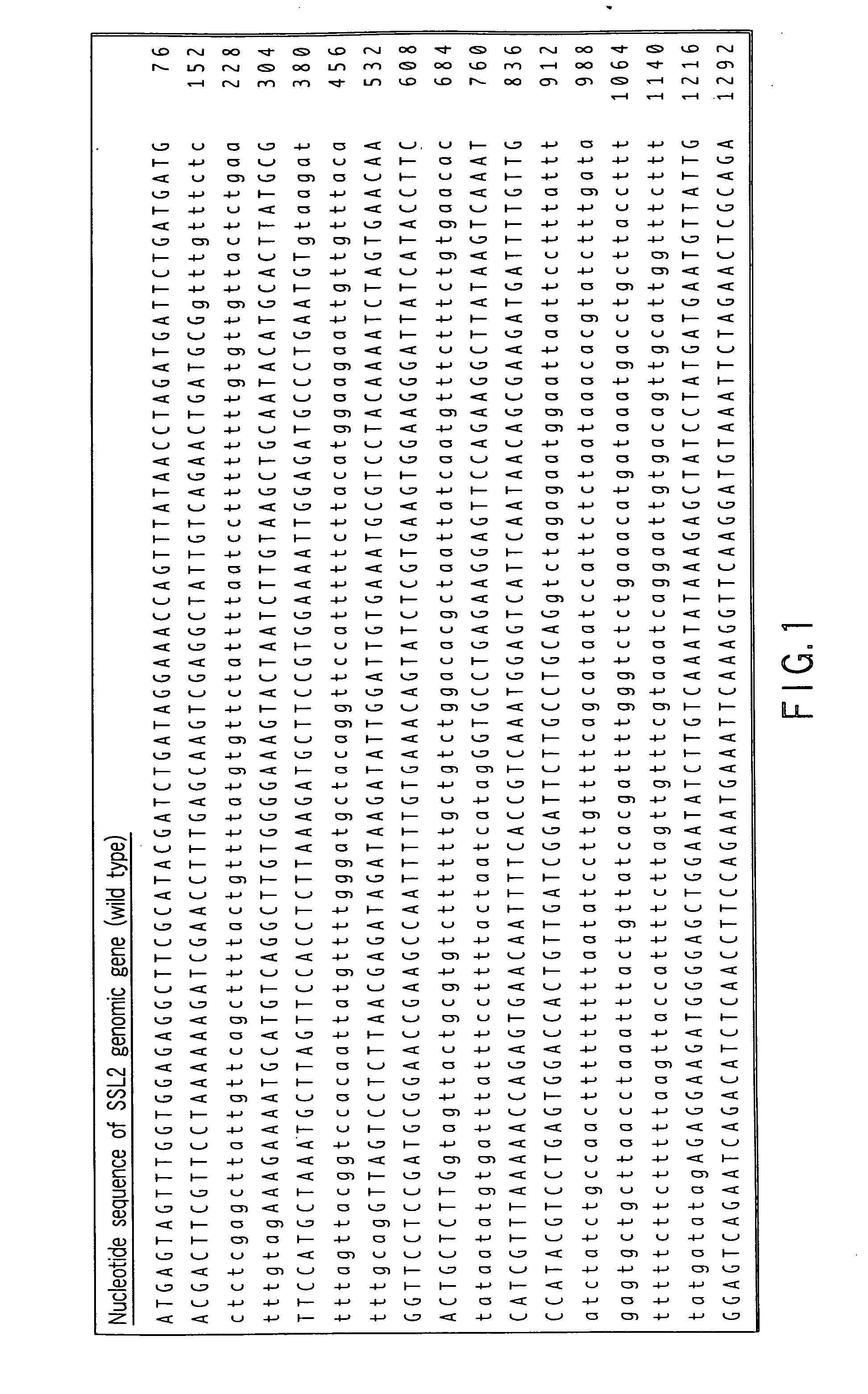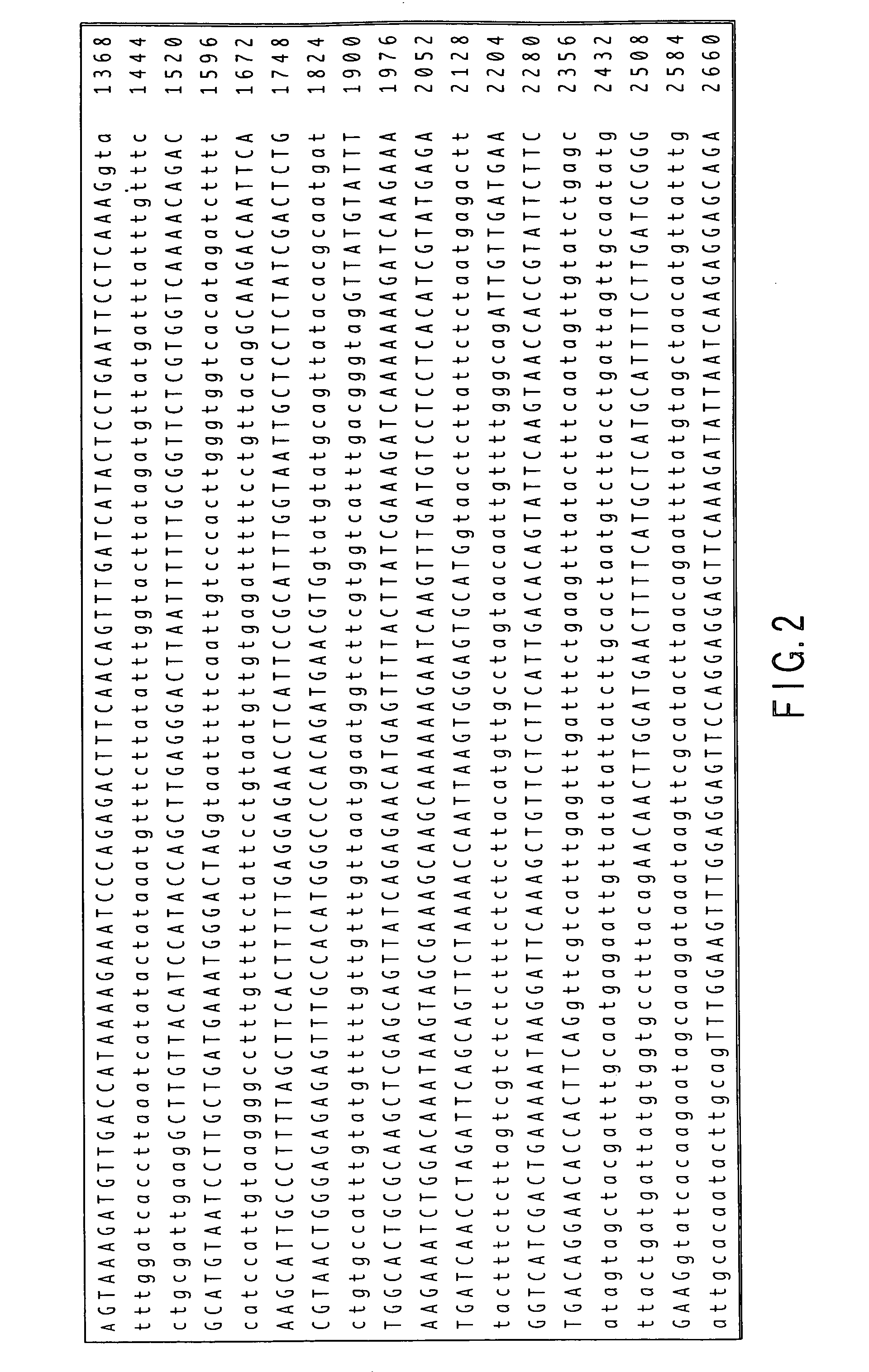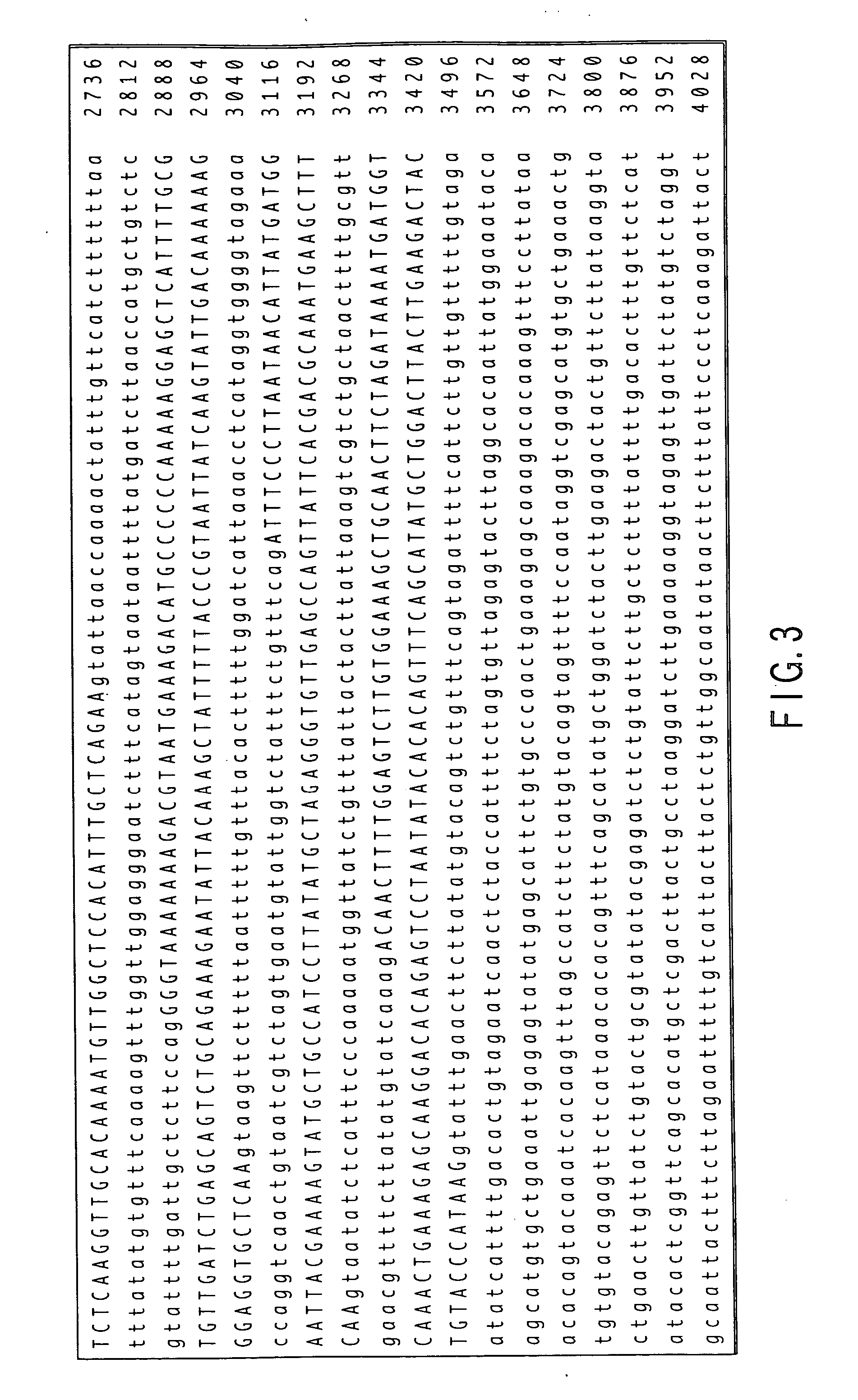Protein that has a function of maintaining a mutation whereby lateral root formation is blocked and a gene encoding the protein
- Summary
- Abstract
- Description
- Claims
- Application Information
AI Technical Summary
Benefits of technology
Problems solved by technology
Method used
Image
Examples
example 1
Production of a Double Mutant ssl2 slr Having ssl2 Recessive Mutation and slr Dominant Mutation
[0094] About 5000 seeds of the slr dominant mutant (FERM BP-8385), which forms no lateral roots, were subjected to a mutagen treatment in which the seeds were immersed in 0.2% ethylmethanesulfonic acid (EMS) solution for 16 hours. The mutagen-treated seeds (M1 seeds) were each grown to plants, and self-pollination of the grown plants was performed, thereby preparing the next generation. Among the next generation (30,000 plants), plants which formed lateral roots although they basically maintained the phenotypes of the slr dominant mutant were selected. After confirming that the aforementioned phenotypes of the selected plants was reliably inherited to the next generation of the selected plants, the selected plants were identified as double mutant and named "double mutant ssl2 slr". In the present example, double mutants ssl2 slr of four lines (i.e., ssl2-1, ssl2-2, ssl2-3 and ssl2-4) were ...
example 2
Isolation of SSL2 Gene
[0113] The double mutant ssl2 slr (ecotype: Columbia) having both ssl2 recessive mutation and slr dominant mutation, prepared in Example 1, was crossed with the wild type (ecotype: Landsberg erecta), whereby F1 generation was obtained. Then, F2 generation as the next generation of F1 generation was prepared by performing self-pollination of the F1 generation. By using the genomic DNA of the F2 generation, detailed mapping of the SSL2 gene locus was carried out on the basis of the genomic information of Arabidopsis thaliana. From the result of the mapping, it was found out that the ssl2 recessive mutation is located in a genomic region including 17 genes from gene At2g25140 to gene At2g25300 on the second chromosome.
[0114] Next, in the genomic DNA of the selected four lines (ssl2-1, ssl2-2, ssl2-3 and ssl2-4) of the double mutant ssl2 slr, the nucleotide sequences of the above-described 17 candidate genes were examined. As a result, in all of the four lines of t...
example 3
Experiment in which it was Confirmed that the SSL2 Gene is Involved in the Blocking of Lateral Root Formation
[0115] The slr dominant mutant (FERM BP-8385) is a gain-of-function mutant of the IAA14 gene encoding an auxin-inducible protein, and lateral root formation thereof is completely blocked under normal growth conditions on an agar medium. However, the double mutant ssl2 slr which has both ssl2 recessive mutation and slr dominant mutation, newly prepared in the present invention, formed lateral roots under the same normal conditions, although the formation of lateral roots was not so vigorous as in the wild type. From this result, it was proved that the normal SSL2 gene is essential for maintaining the lateral rootless phenotype (i.e., the blocking of lateral root formation) observed in the slr dominant mutant.
PUM
| Property | Measurement | Unit |
|---|---|---|
| Length | aaaaa | aaaaa |
| Length | aaaaa | aaaaa |
| Length | aaaaa | aaaaa |
Abstract
Description
Claims
Application Information
 Login to View More
Login to View More - R&D Engineer
- R&D Manager
- IP Professional
- Industry Leading Data Capabilities
- Powerful AI technology
- Patent DNA Extraction
Browse by: Latest US Patents, China's latest patents, Technical Efficacy Thesaurus, Application Domain, Technology Topic, Popular Technical Reports.
© 2024 PatSnap. All rights reserved.Legal|Privacy policy|Modern Slavery Act Transparency Statement|Sitemap|About US| Contact US: help@patsnap.com










